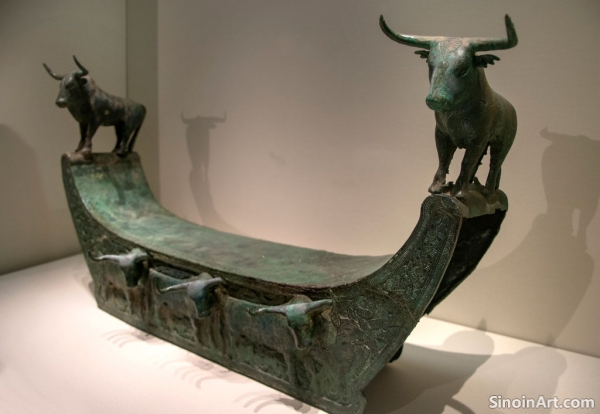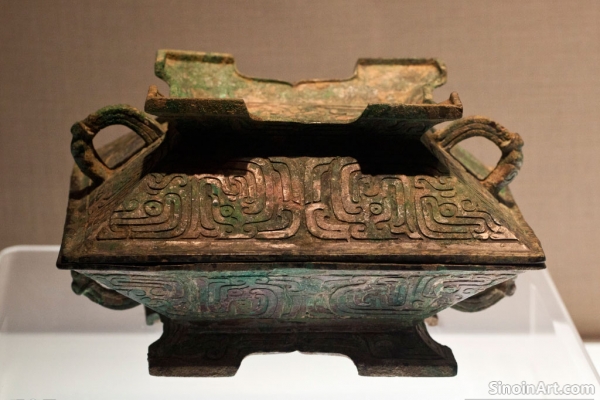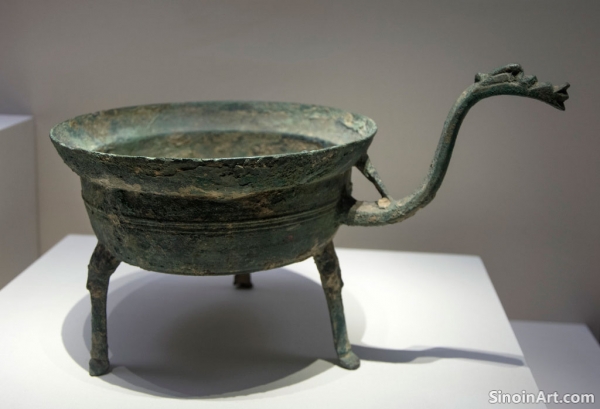The Bronze Bells of Ancient China: Harmony and Power in Sound
|
The bronze bells of ancient China, particularly those found in the Zhou Dynasty and later, were far more than mere musical instruments; they were powerful symbols of ritual, social hierarchy, and imperial authority. Their resonant tones filled temples, courts, and ceremonial grounds, adding a layer of both sonic beauty and symbolic meaning to these important events. The power and elegance of these bronze instruments helped to set the tone for official ceremonies.  The crafting of bronze bells was a sophisticated undertaking, requiring precision casting and tuning methods. Artisans carefully molded and shaped each bell, ensuring that it produced the correct pitch and timbre. The careful tuning and production of these bronze instruments was a long and complex process. The skilled craftsmanship in these instruments continues to be admired today.  Sets of bronze bells, known as bianzhong (编钟), were often arranged in elaborate arrays, allowing for the performance of complex melodies. These bells, which come in many sizes and tonalities, were often carefully arranged to create an overall sense of harmony. The precision tuning of these bells highlights the sophistication of the metalworking techniques of the time.  The use of bronze bells was closely associated with ritual and ceremony. They often accompanied dances, chants, and other forms of performance during important events, adding a layer of both sonic beauty and spiritual resonance. The sound of the bells helped to enhance the ritualistic and spiritual nature of the performance. The integration of the musical and visual aspects of a performance helped to create a powerful overall experience. The legacy of ancient Chinese bronze bells continues to resonate today, showcasing the ingenuity and artistic vision of the metalworkers, as well as the profound cultural importance of sound and harmony in Chinese culture. The study of these instruments provides insight not only into music but also ancient Chinese ritual and culture. |
Tag : Chinese bronze bells, bianzhong, Zhou Dynasty music, ancient instruments, ritual music
Related information
- Bronze Ware and the Development of Ancient Chinese Music Theory: The Use of Scales, Intervals, and Tuning
- The Use of Bronze in Ancient Chinese Water Management Systems: Irrigation and Hydraulic Engineering
- The Enduring Mystique of Chinese Bronze Ware: A Timeless Allure for Collectors and Scholars
- The Influence of Nomadic Cultures on Chinese Bronze Ware: Cross-Cultural Exchanges
- Bronze Ware and the Development of Ancient Chinese Agriculture: Water Management and Irrigation Systems
This article explores the influence of bronze ware on the development of ancient Chinese music theory, focusing on how the precise tuning of instruments led to a greater understanding of scales, intervals, harmony, and the overall structure of musical forms.
This article explores the use of bronze in ancient Chinese water management systems, highlighting its role in irrigation, hydraulic engineering, and the creation of tools and components that helped to control and manage water resources for agriculture.
This article reflects on the enduring allure of Chinese bronze ware, highlighting its appeal to both collectors and scholars, its timeless beauty, its historical significance, and its ability to inspire both fascination and the ongoing pursuit of knowledge.
This article explores the influence of nomadic cultures on Chinese bronze ware, highlighting the adoption of new forms, styles, and techniques, the influence of animal motifs, and the role of trade and diplomacy in the transmission of cultural ideas.
This article explores the use of bronze in ancient Chinese agriculture, highlighting its role in creating water management systems, irrigation components, and other implements that were essential for increasing agricultural productivity and supporting a growing population.